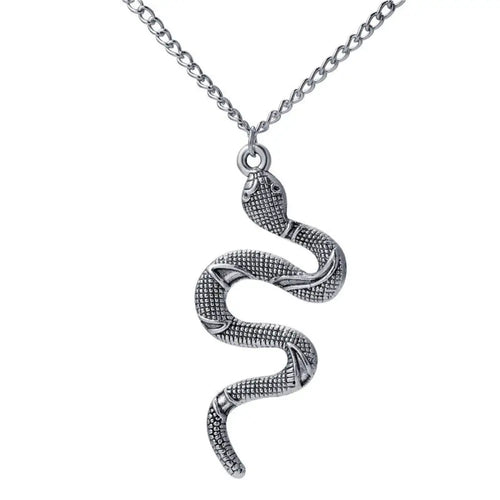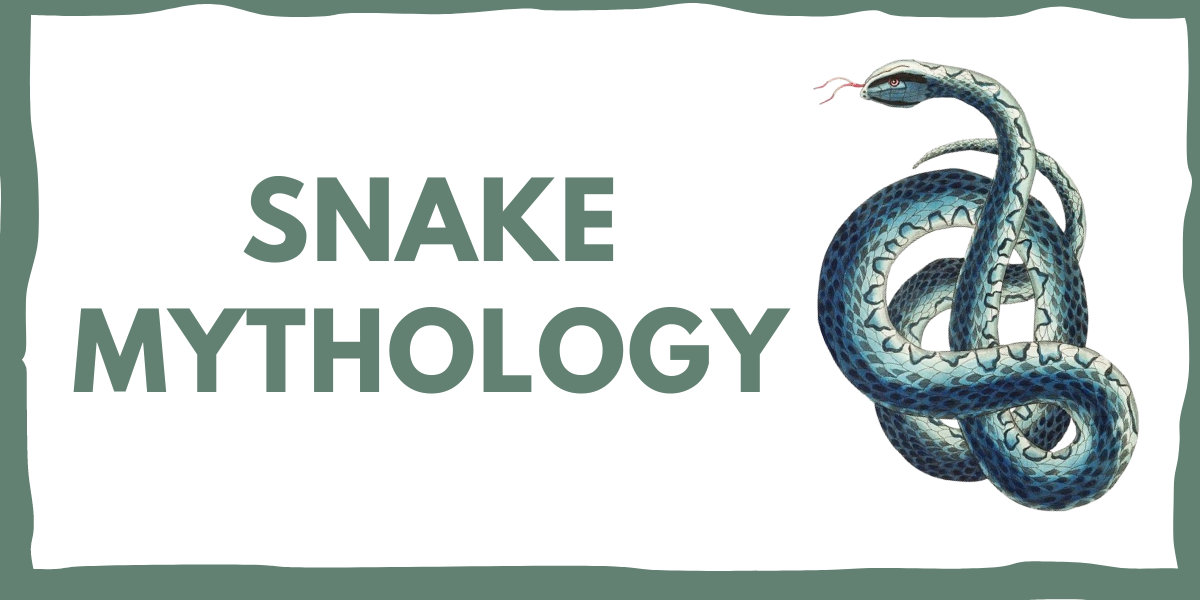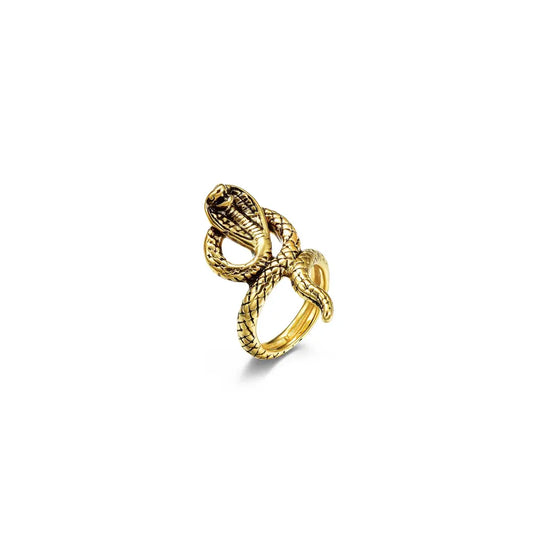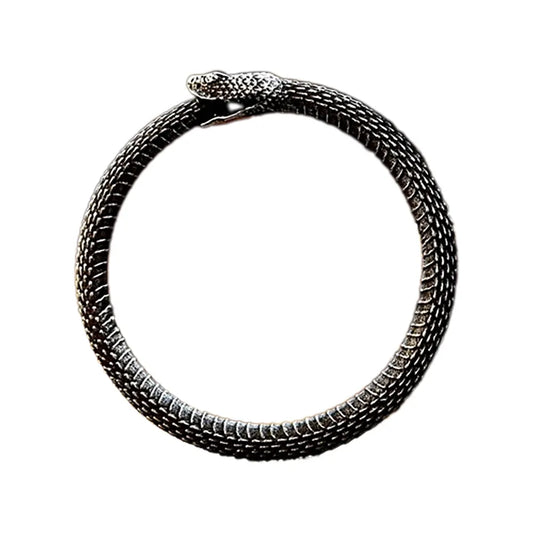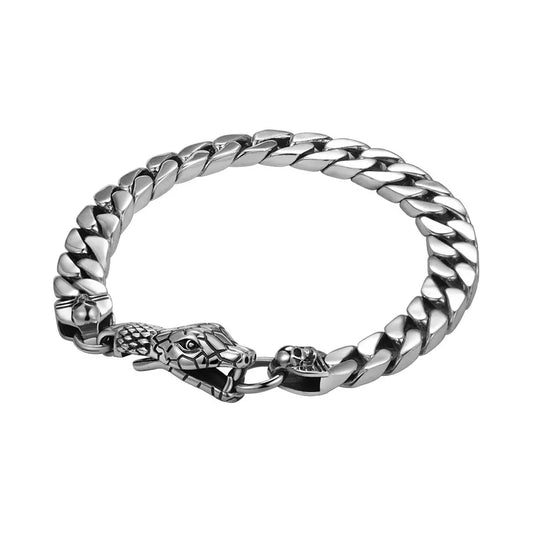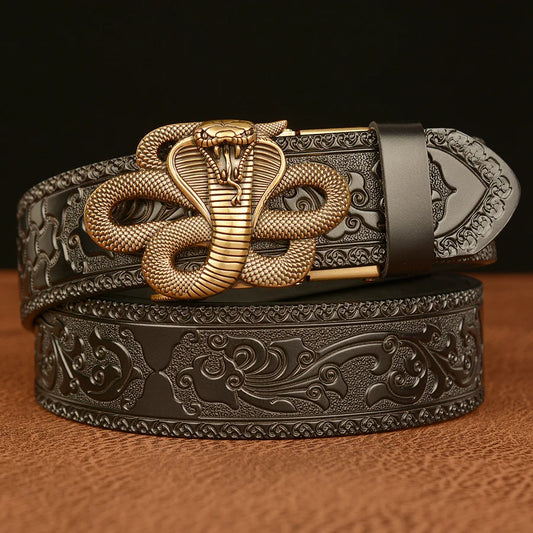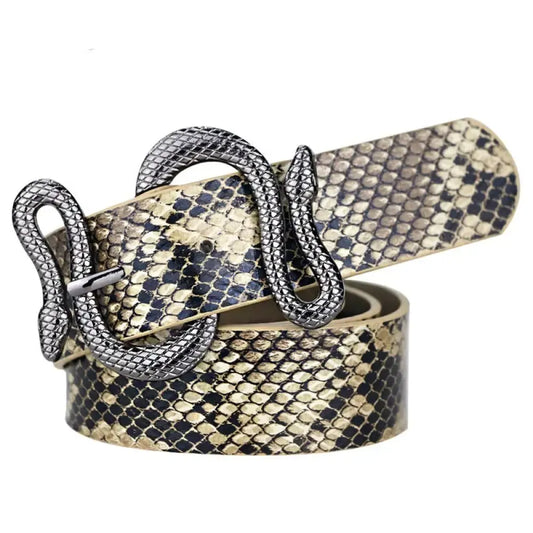All great civilizations managed to translate complex ideas into concrete meanings through symbols. The serpent's symbol was used in all of them and, according to some authors, it sums up the whole philosophy of the universe. 🐍
When we study ancient civilizations, whether in their indelible traces in the stone, or in cyclopean and enigmatic constructions that defy centuries and millennia, or in their written texts, reproduced over and over again to perpetuate the memory, or in the same oral traditions, in verses, songs, etc., or even in the same popular festivals, where the most ancient conceptions of humanity appear, as if frozen, man has always recorded his knowledge and experiences through symbols. Because the language of symbols is the language of nature; and it is the primitive language of humanity. A lot of mountains symbolize this incredible creature. If you want to learn more about mythology here's your website.
The snake is one of the creatures that man has always tried to understand, starting with the Romans, the Greeks, until our time 🏛️, when we discover new characteristics about this animal every day. We will travel through all eras and all cultures to see their representations of snakes! Fan of snake and mythology show the grace with our incredible rings in steel or silver.
THE SNAKE IN THE BIBLE AND EUROPEAN MYTHOLOGY
What does the Bible 📖 say about snakes? It has no specific meaning. The biblical depictions of snakes relate to ideas of deception, shame, faith, and evil. Outside the Bible, snakes can be interpreted as the cycle of life or the indecision that exists in life's most difficult decisions. So be prepared to discover with us the biblical beliefs that exist about this creature. Your dream could relate to either of these examples. That is the beauty of dream interpretation. The dream has no objective meaning, there is only what you understand it to mean. So, let's find out what your dream might have meant.

Understanding the Symbolism of a Snake
Snakes are highly symbolic creatures. They are ingrained in American culture, particularly because of our shared religious heritage. In the Bible, snakes take on many meanings. The most obvious is the serpent that deceived Eve and tempted her to eat the forbidden fruit of the tree of knowledge 🌳. This snake is related to feelings of temptation and sex, questioned faith, and something that stands between you and your religion.
Throughout the Bible, snakes are used in negative images. In Matthew's Gospel, John the Baptist calls the Pharisees a "brood of vipers. Jesus used similar terms in Matthew 23:33, telling them: "You serpents, you brood of vipers, how can you escape the condemnation of hell? This same connection between snakes and dishonesty and low morals has continued to this day.
THE SNAKE IN GREEK MYTHOLOGY
Homer's poems have made it easy for historians to understand this magnificent mythology that everyone knows. This author contributed greatly to the richness of Greek culture through his particular literary genre. And any mythology rich enough includes his share of snakes. In Greek legends, the titan Ophion (whose name means "snake") is said to have ruled the world with Eurynome before the titans Kronos and Rhea overthrew them both ⚔️.
In the temple of Athena dedicated to the goddess, it was believed that a snake held in a cage was the reincarnation of Erichthonios, the fourth legendary king of Athens. A snake was also kept in the sanctuary of Apollo in Delphi, where it was nursed by a virgin.
Here is a list of some of the creatures, which are associated with snakes...
The Gorgonians
It's inevitable, you've heard of it before. These monsters or snake women have appeared in many mythological tales, and some film adaptations have not hesitated to introduce them in their screenplays. For example, there are three Gorgonians.
They are easily recognizable by their physique and their breathtaking features. They are women with large golden wings, with terrible claws (some would say that they are bronze hands). Their faces are punctuated by huge canines (they also say they are boar tusks) and their hair is nothing but snakes. But above all the Gorgonians 🐍 are known to petrify into a stone statue anyone who crosses their eyes. Today it is from this legend that we retain the term "being amazed" when we are petrified by something. To learn more about the Gorgons and more precisely Medusa you can read our article about it.

Echidna
Among all the monsters of Greek mythology, Echidna must be one of the most formidable. Not that she is especially ugly or evil, no, but for the simple fact that she will spawn most of the vilest creatures in all of Greece.
Echidna is in appearance a young woman with a very pretty face but with the body of a gigantic snake 🐍 (they are everywhere...). She is married to Typhon (the son of Gaia and Tartarus). The two of them will give birth to Cerberus (the three-headed dog), the evil winds, the Crommyon's Sow (man-killing sow), the Sphinx (half-woman, half-lion, half-bird), the Hydra of Lerna (multi-headed snake), the Chimera (half-lion, half-goat, half-snake), Ladon (man with a hundred heads), Orthos (two-headed dog), the Lion of Nemea and the Caucasian Eagle.
Finally, Echidna has the last characteristic of having generated a very poisonous plant with its slime, which will be one of the weapons of Medea (which we will see later).

Medea
The figure of Medea is often portrayed as being drawn in a chariot driven by snakes.
Python 🐍
Python is an immense and monstrous snake that watched over the oracle of Delphi. He is either from Gaia or Hera. In any case, one day Hera asked Python to pursue Leto, one of Zeus' lovers who was pregnant with Apollo and Artemis. But in vain. Much later, Apollo leaves in search of Python to seek revenge. Once found, he pierces him with his bow and arrows. Thus Apollo officially became the master of the Delphic oracle who watched over Python 🐍. Since that day, since the assassination of Python, this oracle is called Pythia.
Scylla
Legend has it that Scylla was a beautiful young woman, daughter of Phorcys, and Céto. One day the god Glaucus (son of Poseidon who predicts the future) falls madly in love with Scylla but she refuses his advances. He then asks the magician Circe to give him a love filter so that Scylla can fall in love with him. Except that Circe was herself in love with Glaucus. So to get rid of her rival, she gives Glaucus a poison. The latter, believing it to be a love potion, pours it into the fountain where Scylla is bathing. But as soon as she comes into contact with the poison she turns into a hideous woman surrounded by snakes 🐍 and howling dogs. When she sees herself transformed like this, Scylla, ashamed, runs into the sea where she will live not far from Charybdis in the Strait of Messina, where she will terrorize the sailors.💀

Cerberus
Cerberus is a three-headed dog. He is the son of Echidna and Typhon and the brother of Orthos, the two-headed dog. The interpretation of Cerberus is deeper than it seems. Each of the heads would represent the past, present, and future or birth, youth, and old age.
Thus this dog has the major role of holding the gate of hell. He's hungry for fresh meat, so the dead have nothing to worry about. However, once the Styx was crossed, this dog terrorized the recent dead who had to bring a honey cake to calm him down. Once in the underworld, Cerberus would formally prevent anyone from coming out. Also, several personalities would have tried to coax the hound to gain access to the world of the dead (Orpheus, Theseus, Psyche, etc.).

The hydra of Lerna
Bred by Echidna and Typhon, the Hydra was nevertheless raised by Hera near Lerna, hence its name. It is an immense snake whose extremity ends in a multitude of snakeheads. It is said that only one of these heads is immortal. On the other hand, every time one of the heads is cut off, two others grow back. Their breath was also a deadly poison that killed anyone who breathed it in. This creature will be defeated by Heracles during his twelve labors that we will see later.

Chimera
The chimera is a rather strange creature with a lion's head, a goat's body, and a snake's tail. This monster was generated by Echidna and Typhoon. The chimera was reputed to spit fire and devour humans. It terrorized the region of Lycia in Asia. It was Bellerophon, on his Pegasus horse, who killed it. But this creature has given rise to some interpretations. Some say that it represents the states of a woman during her life: the lion would represent puberty, the goat the maturity, and the snake the menopause. Still, others associate this creature with the seasons: the lion being the spring, the goat the summer and the snake the winter because it is cold-blooded and when it molts, it regenerates.
In any case, the chimera represents an overall "impossible" creature, contained in its appearance and its crossbreeding. It is from there that the word chimeric would have been born to thus designate dreams, ambitions impossible to achieve.

Ladon
Ladon was very little represented in mythology. Child of Echidna and Typhon, his appearance is ambiguous. It would be either a man or a reptile but with nevertheless a hundred heads, each speaking a different language. This creature was called upon to guard the golden apples of the Garden of Hesperides, which will constitute a major stage of the twelve works of Heracles. Like the fate of all monsters, he would finally be defeated. To thank Ladon for his services, Hera would have given him a place in the sky that is now called the constellation of the Dragon.
Today there are three Caducees inherited from Greek mythology. The Cup of Hygie symbolizes the pharmaceutical profession, the Staff of Asclepius represents medicine, and the Caduceus of Hermes illustrates trade and negotiation.
THE SNAKE IN ROMAN MYTHOLOGY
The Romans borrowed Homer's stories from the Greeks, but some of their deities were unique (they are still original). Angitia was a healing serpent goddess worshipped by the Marses, a Latin tribe who lived in a mountainous region of central Italy ⛰️. A large temple was built for her on the shores of Lake Fucinus, a large lake that was dried up in the 19th century.
In classical antiquity, the snakes were related to healing. The goddess was known for her ability to heal diseases and poisonings, especially snake bites. She had control over their lives and their deaths. The lands that had originally been inhabited by the Martians also gained a magical reputation within the Republic and later the Roman Empire. They are known for their witches👻.
THE SERPENT IN CELTIC MYTHOLOGY
Celtic Mythology associates snakes with wisdom, fertility, and immortality. The Celts tended to link them to healing pools and water 💧. They attributed the same properties to the Serpent's Egg, a smooth egg-shaped stone that would have magical powers comparable to those of the Grail or the Philosopher's Stone. Snakes were often depicted on Celtic altars.
There is a legend according to which Saint Patrick rid Ireland of the snakes that represented the ancient cults, thus chasing away the ancient polytheistic Celtic beliefs, in favor of the Christian religion ✝️.

THE SERPENT IN NORSE MYTHOLOGY
Jormungand or Iormungang was a monstrous sea serpent, child of Loki and Angrboda; it was also called "the serpent of Midgård" (Midgardsormr) or "the mysterious dragon of the North". Odin father of Thor had thrown him into the depths of the sea because a prophecy had foretold that the children of Loki would decimate the Aesir. Since then, he has bitten his tail to hold the land in place, causing tidal waves with his simple movement.
In Ragnarök's time, Jormungand will cause a massive tidal wave against Thor. Thor will succeed in defeating him, but he will eventually be hit by the venom of the monstrous creature. One day Thor was to attack Jormungand. He rented a boat in the harbor, the only one in place was the giant Ymir, who was very afraid to go to sea when Jormungand was awake. Odin's son did not inform him of his intentions so that he could be as discreet as possible. At first, Ymir caught two whales, then Thor found the place where Jormungand was, and to lure him, he hung an ox's head on his belt. Jormungand fell into the trap.
It was a tough fight between Thor and Jormungand, and the ship could fall at any moment. Thor took out the monster's head and prepared to hammer Mjöllnir with it to end it once and for all.
THE SNAKE IN AMERICAN (PRE-COLOMBIAN) MYTHOLOGY.
In Central America, the ancient Mayan sacred book, "Chilam Balam", states that the first inhabitants of Yucatan were the Chanes or People of the Serpent. Sources cite the Chanes as being led across the sea by the Serpent God Itzamna, who ruled through his esoteric knowledge rather than his strength 💪. Feathered serpents (which appeared to have the ability to fly) were also much represented in Mayan symbolism.
The Aztecs, other people of pre-Colombian Central America, also worshipped a serpent god: Quetzalcoatl. He was also a mythological feathered figure who brought knowledge of science and mathematics to his people 📚.

THE SERPENT IN NATIVE AMERICAN MYTHOLOGY...
For the Native American Indian culture, the snake was the symbol of fertility and rebirth. In their mythology, Unhcegila was a giant snake-like creature that could swallow an entire human 😓! Native American mythology also included a symbol representing a serpent deity called Avanyu, who brought storms to the earth.
The Hopi of North America performed a Serpent Dance to influence the weather and invoke the gods. After the ceremony, captured snakes were released so they could carry the prayers of the priests to the underworld, where the rain gods were supposed to live 🌧️.
THE SERPENT IN EGYPTIAN MYTHOLOGY.
In Egyptian Mythology, the serpent is associated with immortality and the gods of the Old and Middle Kingdom. A serpent was represented on the Tombs of the Pharaohs ⚰️. This animal was supposed to take them to heaven, to the land of the gods. The snake thus became a symbol of royalty in Ancient Egypt. For example, it could be found on the headdress of the pharaohs in the form of the female cobra Uræus, which was supposed to protect the pharaoh from his enemies.
Pharaoh's snake
But the symbolism attached to the Snake in the historical period of the New Empire was upset. It was during this period that Egypt was invaded by the people of the Hyksos, who came from Asia. The serpent changed its meaning to represent the invaders and was therefore considered the symbol of evil.
The Egyptian serpent goddess was named Wadjet. She was the protective deity of the city of Dep and was also considered the protector of kings and pregnant women 🤰. Wadjet was represented as a poisonous Egyptian cobra or a woman with a snakehead.
The Egyptians also believed that the god Amun could transform himself into a snake to regenerate himself. They claimed that the underworld in their mythology was guarded by Nehebkau, a two-headed guardian snake. Finally, the Egyptians represented Apophis (the god of evil and chaos) as a giant poisonous snake.
THE SERPENT IN JAPANESE MYTHOLOGY
Benzaiten is the Japanese goddess of fertility, river and water flow, language and poetry, music, dance, wealth, and good fortune (that's already a lot!). Belonging to the "Seven Divinities of Happiness", it is often accompanied by a snake. Dragons and snakes are her messengers and avatars, and she herself may appear as a white snake. Benzaiten is one of the best-known divinities in Japan, we can see it by the number of temples for this goddess 🏯. It is often located near a body of water such as a lake, pond, river or the sea.
In this mythology snakes are deeply related to dragons, they are considered as small dragons. As in Chinese mythology, Japanese dragons are associated with water (especially rivers), and although they are powerful and potentially frightening, both Chinese and Japanese respect them enormously.
Their characteristic skin that changes after a certain period of time has given them the name Metamorphs in Japanese mythology. They can live for thousands of years ♾️et can walk between the underworld, the sky, and the human world. It is important to know that a living snake is a positive sign, unlike a dead snake which represents misfortune.
THE SERPENT IN AFRICAN MYTHOLOGY
In African mythology, an ancient god would have created the sun, the moon, and then created the world, from a piece of clay. The god also created a set of twin primordial beings, called "Nummo". According to the Dogon people in Mali, these twins were a half-human and half-snake. In African tales and legends, these ancestral spirits were immortal ⚰️❌. It is even said that they came from another world and that they participated in the creation of many animal species on Earth.
The story of the Fon people of West Africa tells the legend of Aido-Hwedo. This cosmic serpent, worshipped as a god, carried in its mouth a founding couple of Mawu and Lisa to form the primordial world 👫🏾. Once this work was completed, Mawu and Lisa ordered Aido-Hwedo to encircle the Earth to hold it in place. The earthquakes were caused by the snake moving suddenly. So here we find again the symbolism of Ouroboros.

THE SNAKE IN CHINESE MYTHOLOGY
The Chinese Serpent God is described as the famous dragon with the characteristic slender shape, in the mythology of these people 🐲. But ancient sources say that this Snake-Dragon most likely refers to the winged-legged serpent of Hindu mythology, called Naga.
In Chinese Mythology, human beings are said to have been created by Fu Xi and Nu Wa (two Chinese mythological heroes), according to an ancient Chinese legend. A couple of heroes were represented as snakes with human heads. According to the legend, the duo contributed to the development of the Chinese writing system 🈶. These two characters also represent the personality traits of intelligence, wisdom, and communication, which the snake represents in the Chinese Zodiac. Fu Xi and Nu Wa are suspected to exist in Chinese history, but they are not endowed with serpentlike features!

THE SERPENT IN INDIAN MYTHOLOGY
In ancient and modern Indian beliefs, the Naga are an ancient race of snakes that descended from the sky. The Ancient Book of Dzyan 📖, probably one of the oldest Sanskrit sources, talks about ancient Indian myths and mentions these fantastic creatures.
The Nagas live in underwater or subterranean realms. They control precipitation and interact with deities and humans in a variety of ways. Some are good, while others can be cruel and vengeful.
Naga Snake Mythology Indian
It is said that the Nagas have a human body above the waist and that they have the tail of a dragon or a snake 🤔. They can also transform themselves into an entirely human creature or an entirely serpentine form. Naga females (the Nagi) are described as extremely beautiful creatures, so ancient Indian dynasties claimed their family origin as coming from the union of a human and a Nagi.

There are many references to the snake in Hindu myths:
- Kaliyawas a five-headed serpent king who poisoned the water and land until the god Krishna defeated him in battle 🗡️.
- Kadruwas a serpent goddess who had 1000 children. Legend has it that they still live today as snakes in human form.
- Shesha:a snake-like creature who is said to be the king of the Naga, and one of Kadru's sons.
- Manasawho would be the queen of the Naga.
- Muchalinda,a snake king who protected Buddha from a violent storm.

Conclusion
This is what these creatures represent in most of the cultures of our world 🗺️. We go from a rather negative symbolism, from a Christian point of view to a symbol of strength and goodness among the Chinese or the Japanese for example 👍.
Even if these animals are really dangerous for humans, they remain fascinating because they are the creature with the richest history and the deepest symbolism. Click below to discover our collection of snake jewels 💍, there is something for every taste and for every species (python, anaconda, boa, etc).


































































